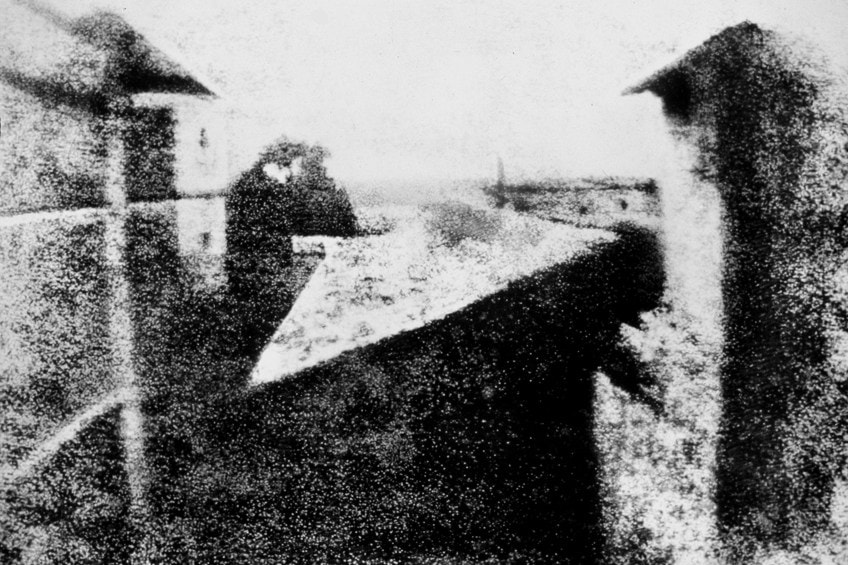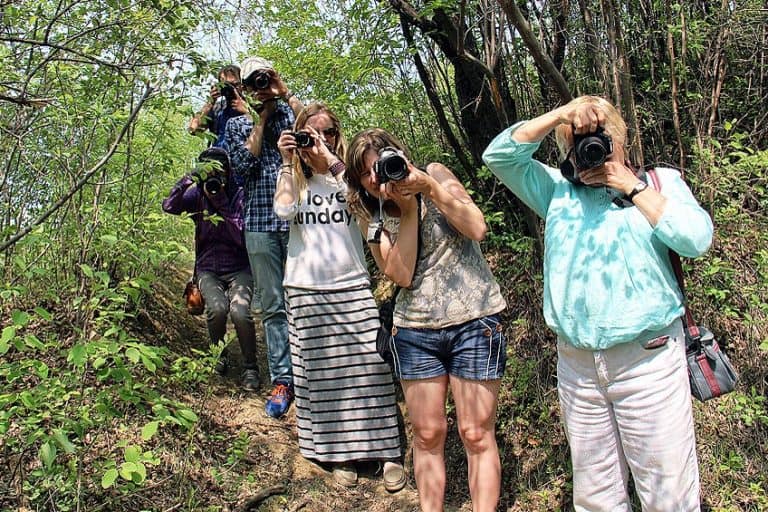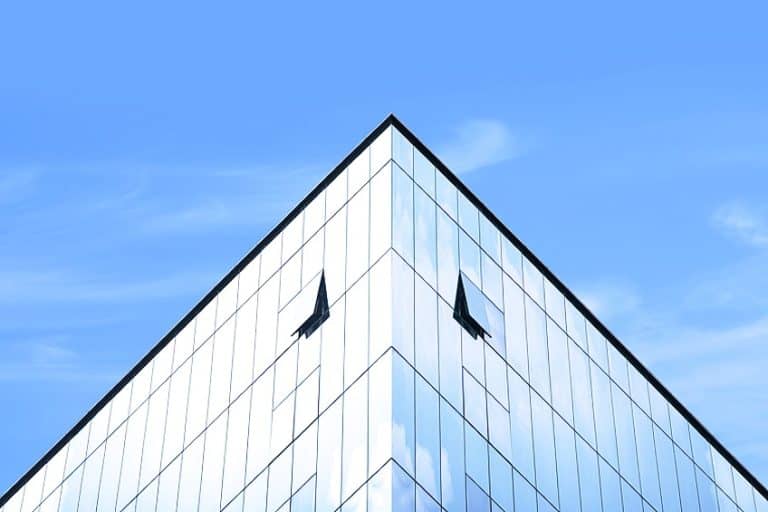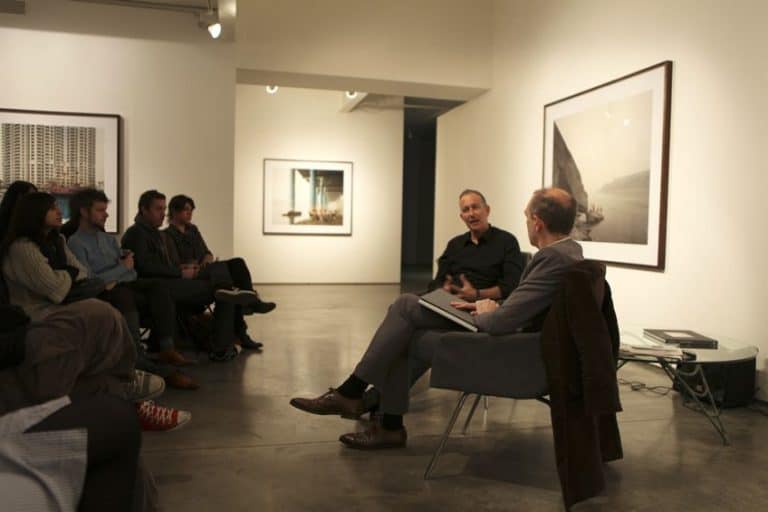First Picture Ever Taken – The Dawn of Photography
When was the first photo taken in the world, and what was depicted in the first permanent photograph? Today, we will explore the first picture ever taken, as well as the photographer behind the lens. The first photo in the world was a significant milestone that led to many major developments in art, culture, and commerce. Not only will we examine the world’s first permanent photograph, but also a series of firsts that followed, including the first color photograph, the oldest selfie, and the first photograph of people. Keep reading for more about the world’s first image!
Table of Contents
- 1 Taking a Look at the First Picture Ever Taken
- 2 A History of the First Photograph Ever Taken
- 3 A Series of Firsts in Photography
- 3.1 The Oldest Photo in the World With People in It
- 3.2 The First Self-Portrait in the World
- 3.3 The First Photo of Casual Day-Drinking
- 3.4 Oldest Photo Hoax
- 3.5 The First Photograph of the Moon: Moon (1840)
- 3.6 The First Photograph of the Sun
- 3.7 The First Aerial Photograph on Earth
- 3.8 The First Photo of a Tornado in Kansas
- 4 Frequently Asked Questions
Taking a Look at the First Picture Ever Taken
The world’s first permanent photograph was taken in 1827 and was titled View from the Window at Le Gras. The first photo in the world was created by an inventor from France named Joseph Nicéphore Niépce. But, what was portrayed in the oldest photo ever created?
The oldest photo depicts a portion of the photographer’s estate, Le Gras, capturing its structures and surrounding landscape as viewed from a tall window.
The Creator of the First Photograph: Joseph Nicéphore Niépce
| Name | Joseph Nicéphore Niépce |
| Nationality | French |
| Date of Birth | 7 March 1765 |
| Date of Death | 5 July 1833 |
| Place of Birth | Chalon-sur-Saône, Saône-et-Loire |
| Mediums | Heliography, photography, pyréolophore, and physautotype |
It’s unclear when Niépce began his initial photography experiments, however, it is believed that his interest in photography was rooted in his interests about the camera obscura, a drawing tool that was common among wealthy dilettantes of the late 18th and early 19th centuries. Due to his curiosity in the new art of lithography, Niépce chose to explore photography processes and produce the world’s first permanent image.
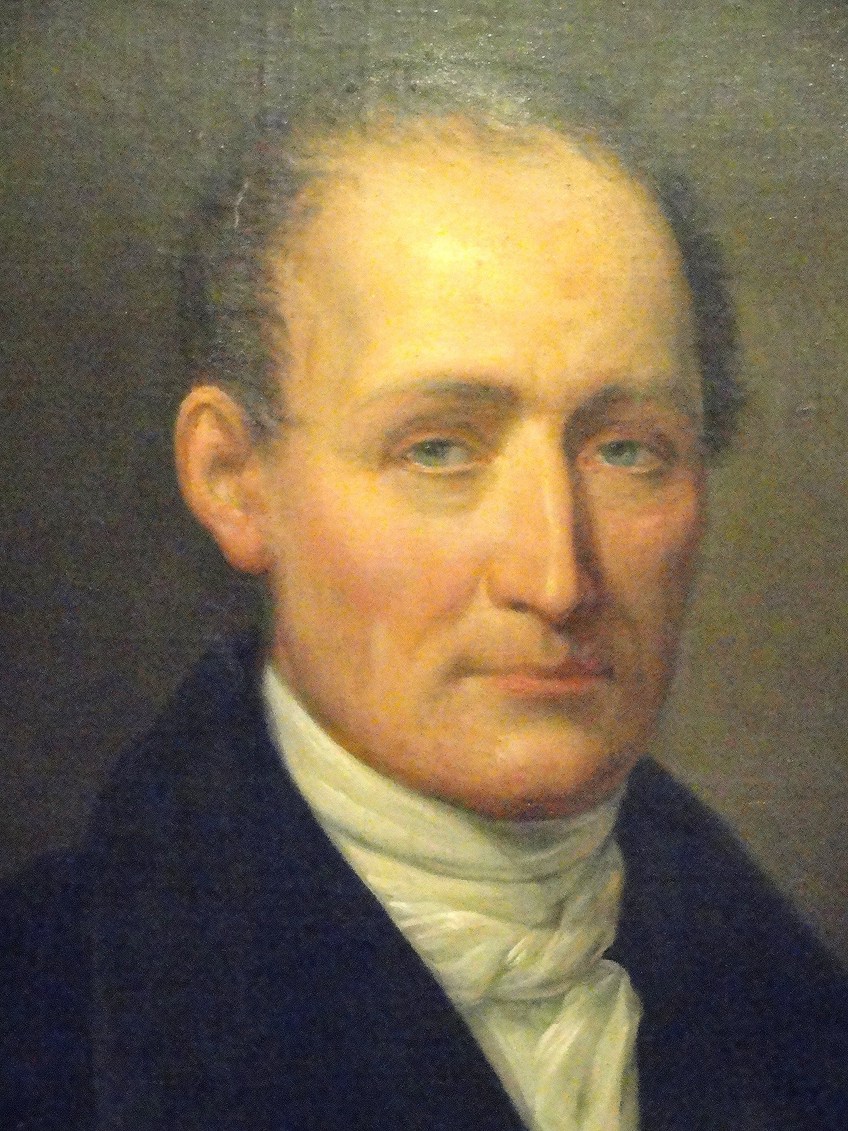
Many early photography icons such as Henry Fox Talbot and Thomas Wedgwood, were motivated by the camera obscura‘s lovely but transitory miniature “light paintings” and used it to capture successful images rather than tracing over them with a pencil.
Niépce reportedly made attempts at creating comparatively tiny camera images on paper coated with a silver chloride. These experiments were recorded in correspondence sent to his sister-in-law, written around 1816.
Niépce’s early experiments were negative since the images resulted in sections of the image showing up dark where it was supposed to be light. Niépce then focused on using bitumen of Judea, a naturally occurring asphalt that was utilized for many purposes since antiquity. The bitumen was also utilized by painters during Niépce’s time as an acid-resistant layer applied on copper plates for engravings.
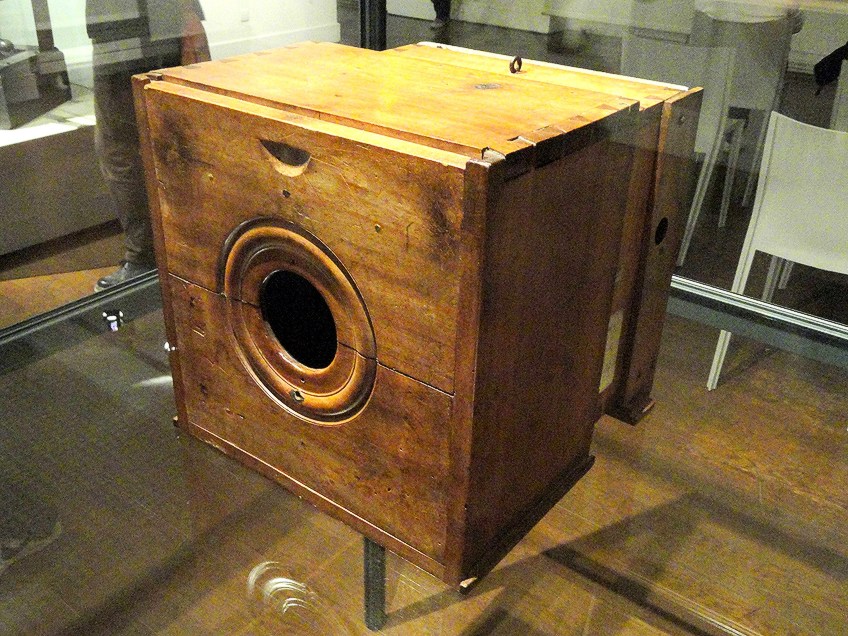
The plate’s covering was removed using a solvent after the artist scraped a design through it. The plate was then used to create ink reproductions of the image onto paper. The fact that the bitumen covering became less soluble after being exposed to light piqued Niépce’s curiosity. Niépce lightly covered a lithographic stone, a sheet of metal, or a piece of glass with bitumen that had been dissolved in lavender oil, a solution frequently found in varnishes. A test subject, usually an engraving produced on paper, was set over the covering once it had dried, and the two were then left out in the sun.
Only the bitumen had been protected from light by outlines or dark regions in the test subject after enough exposure could be rinsed away using the solvent. Acid etching might have been used to remove the exposed portions of the surface or the residual bitumen was probably used as the water-repellent ink in lithographic printing.
Niépce gave his method the name “heliography”, which is Latin for “sun painting”.
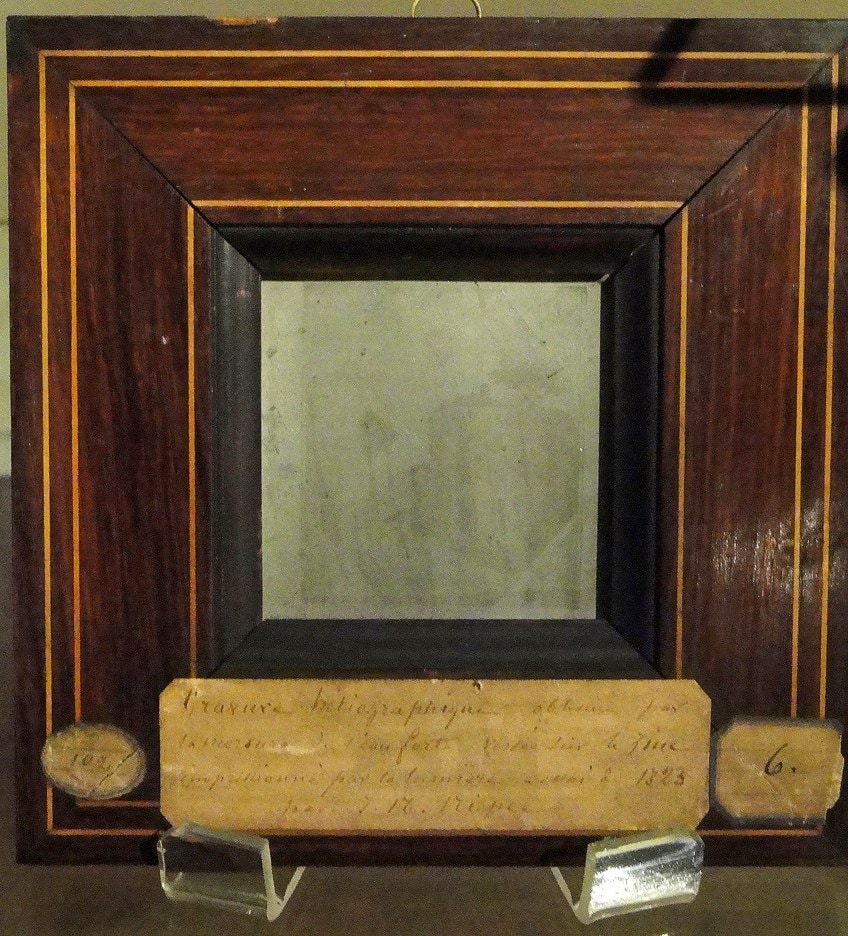
View from the Window at Le Gras (1827)
| Date | 1827 |
| Medium | Heliograph |
| Dimensions (cm) | 16 x 20 |
| Where It Is Housed | Harry Ransom Center, Austin, Texas, United States |
Niépce used a camera obscura to project the image onto a plate that had been lightly coated in bitumen of Judea. In regions with intense lighting, the bitumen solidified, but in parts with low lighting, it stayed soluble and could be removed using a solution of oil of lavender and white petroleum. The camera was set at a long exposure period with the opposite sides of the structures receiving sunlight. It is believed that the first image had an exposure time of up to eight hours!
However, the exposure may have even lasted for a number of days, according to a researcher who examined Niépce’s records and replicated his procedures.
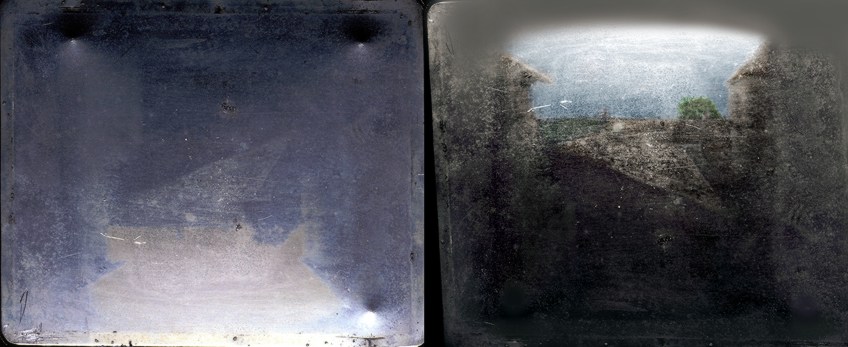
A History of the First Photograph Ever Taken
Niépce traveled to the UK at the end of 1827 and introduced his process to Francis Bauer, a botanical illustrator, to whom he showed numerous other examples of his work. The remainder were contact-exposed replicas of the original pieces of art, which became the sole instance of a camera-produced photograph.
Bauer urged Niépce to speak to the Royal Society about his heliography method.
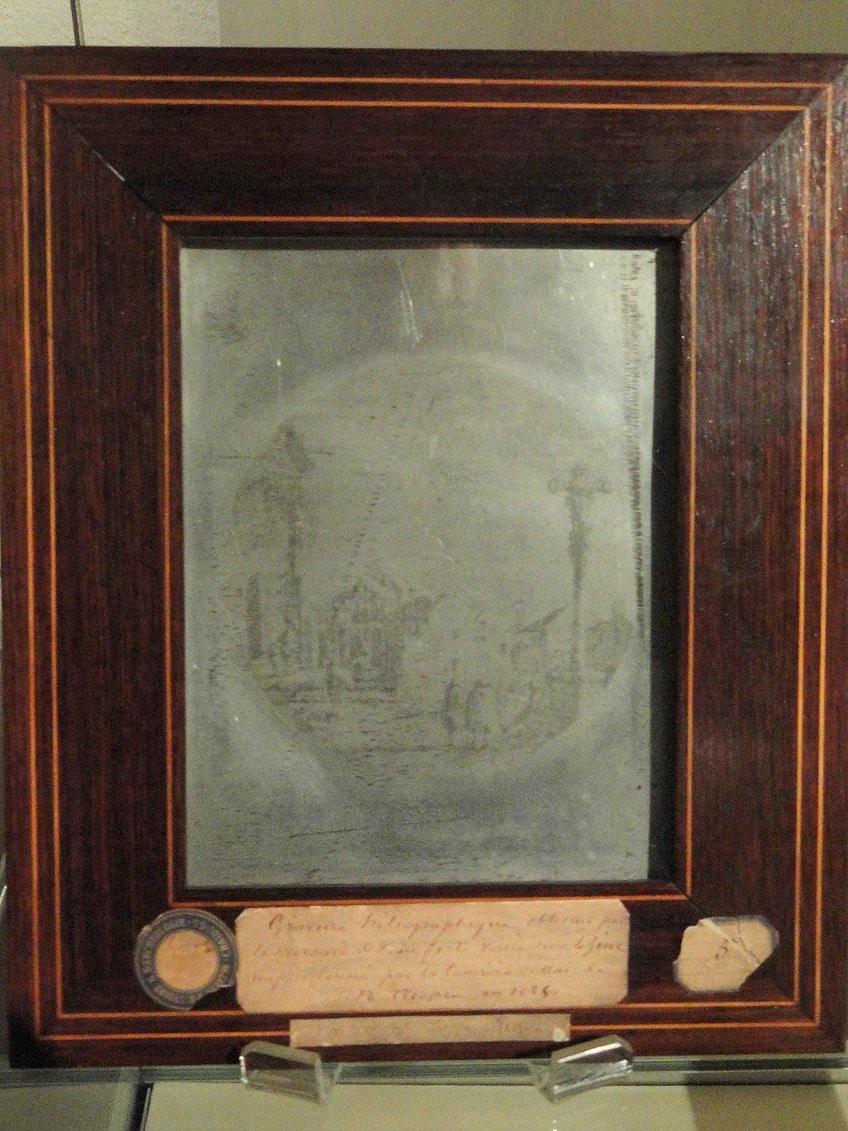
The Royal Society rejected a paper that Niépce submitted because he refused to divulge any specifics in it, which violated a rule that forbade presentations regarding unrevealed and secret procedures. Niépce delivered Bauer his paper and the samples before departing for France. A stroke caused Niépce’s abrupt death in 1833.
Bauer fought for Niépce’s claim to be recognized as the first inventor of a method for creating irreversible images after the groundbreaking photographic methods of Henry Fox Talbot and Louis Daguerre were made public in January 1839.
The specimens were ultimately displayed before the Royal Society on the 9th of March 1839. After Bauer’s passing in 1840, they were owned by a number of people and occasionally shown as historical oddities. The final public performance of View from the Window at Le Gras occurred in 1905, after which it was forgotten for the next 50 years.
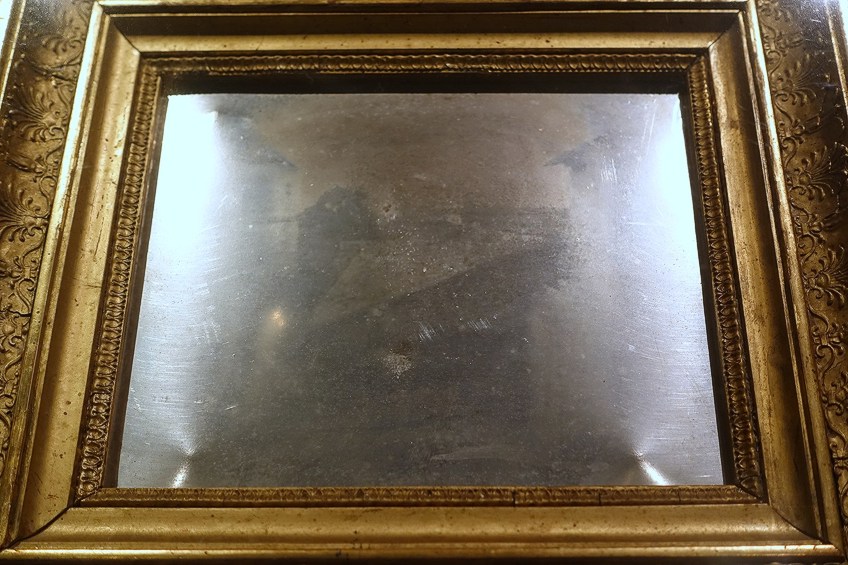
The Re-Emergence of the First Picture Ever Taken
Initially, it was thought that the world’s first photograph was an image of a man being arrested that was shot in 1847 and created using the daguerreotype process. In 1952, historians Helmut and Alison Gernsheim found the image and made it well-known, supporting Niépce’s claim to be the father of photography. They hired a professional at the Kodak Research Laboratory to create a contemporary photographic replica but it was quite challenging to capture all that could be observed, while looking at the genuine plate. In order to clear up the situation and make the scenario more understandable, Helmut Gernsheim severely edited one of the copy prints.
Up until the late 1970s, Gernsheim exclusively permitted the publication of his improved version.
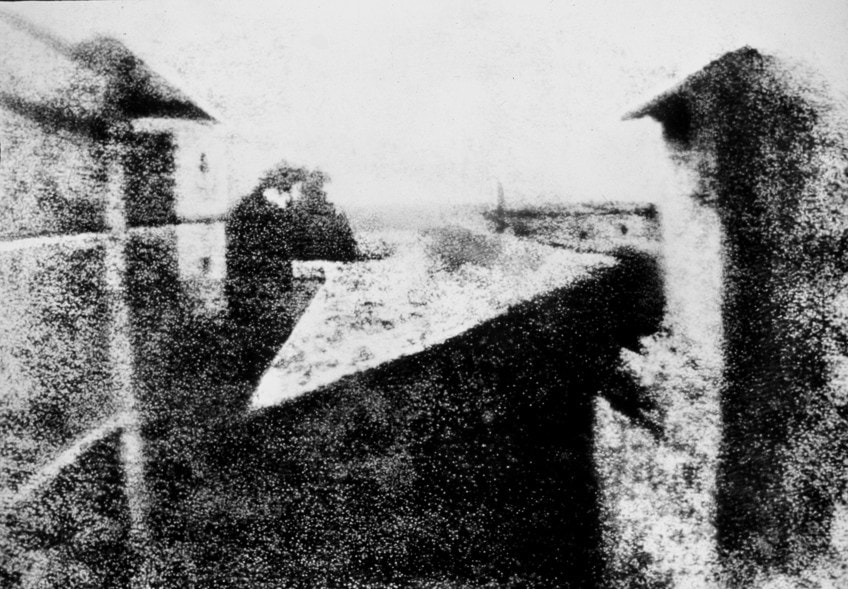
It was discovered that the plate had developed bumps around three of its corners and had been altered at some point after it was copied in 1952. These bumps forced light to bounce in manners that interfered with the clarity of those portions, as well as the overall composition.
The Gernsheim’s traveled with the image and exhibited it at many shows across Europe in the 1950s and 1960s.
At the University of Texas in Austin, Harry Ransom purchased the majority of the Gernsheim’s photography collection in 1963. Although it had not traveled much since then, it made a trip to Mannheim, Germany in 2012 and 2013 as a part of the exhibit The Birth of Photography—Highlights of the Helmut Gernsheim Collection.
Conservation and Analysis of the First Image
Scientists at the Getty Conservation Institute investigated the image employing reflectance fourier transform infrared spectroscopy, X-ray fluorescence spectroscopy, and other methods during a research and conservation effort between 2002 until 2003. They verified that the metal plate was made of pewter and that the picture was produced using bitumen of Judea. The current exhibition case system that keeps the item in a constantly monitored, stable, and oxygen-free atmosphere was also created and developed by the institute.
Researchers from the Louvre Museum revealed their findings from an ion beam study of the image in 2007. This revealed the specifics of the corroding oxidation process.
A Series of Firsts in Photography
In a time when capturing a selfie or simply documenting your daily activities has become somewhat ordinary, one might stop to consider the origins of now Contemporary images. The first photo in the world was shot in 1827, however, to be more accurate, this was the year when the first ever-lasting photograph of a natural scene was created.
You may be further shocked to find out the truth behind some of the most Contemporary kinds of images. We will now dive into other pioneering images that have largely shaped how many perceive the world.
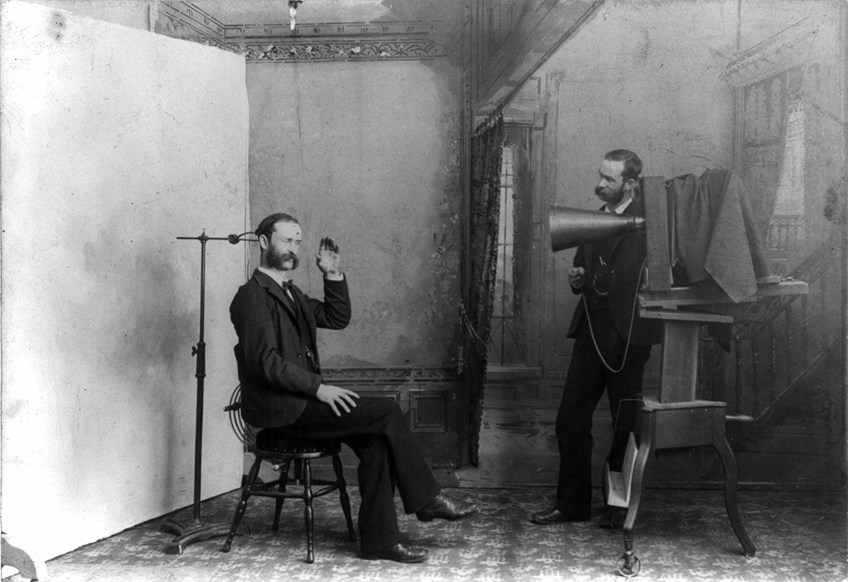
The Oldest Photo in the World With People in It
The daguerreotype process was the first accepted photography technique created by French artist and photographer Louis Daguerre. Daguerre, who was regarded as the pioneer of photography, unknowingly captured the first human to ever appear in a photograph when he took a picture of Paris’ Boulevard du Temple in 1838.
The picture depicts a man having his shoes polished on the sidewalk.
The only person in the streets, in the judgment of experts, who stopped long enough for the extended exposure to catch it was a shoe shiner and his customer. While it may appear that there were only two people at the scene, you may be surprised to find out that there were, in fact, numerous commuters and people, however, because the exposure period was lengthy, many people were not captured.
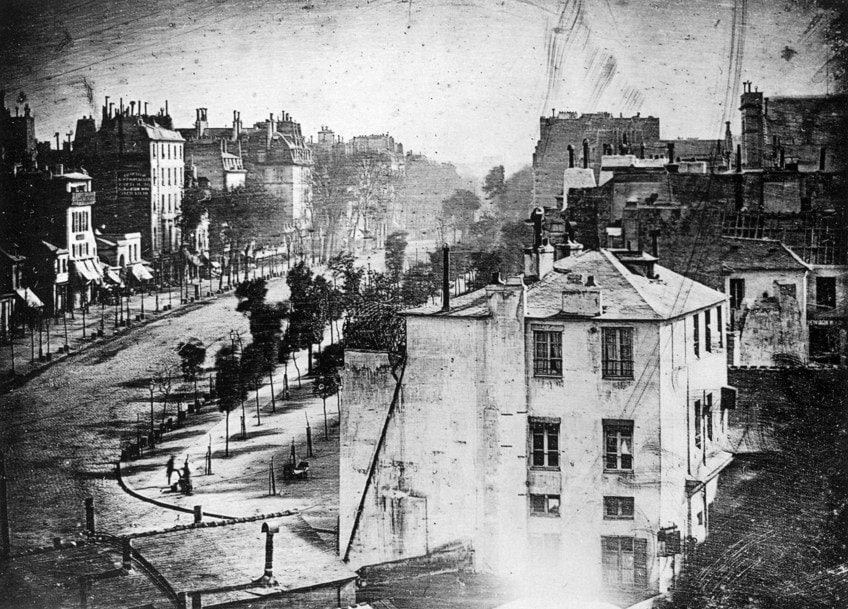
The First Self-Portrait in the World
Who took the first selfie in the world? The first self-portrait in the world was by Robert Cornelius. Joseph Saxton, an American inventor, approached Cornelius because he had shown a special interest in chemistry in his private schooling and needed a silver plate for his daguerreotype. Robert Cornelius was driven to refine the daguerreotype after his first encounter with photography.
The 30-year-old lamp maker and the aspiring photographer took a self-portrait outside the family business in October in 1839, which certainly made history and cemented Cornelius’ name as the first person to capture a self-portrait, or selfie, on camera.
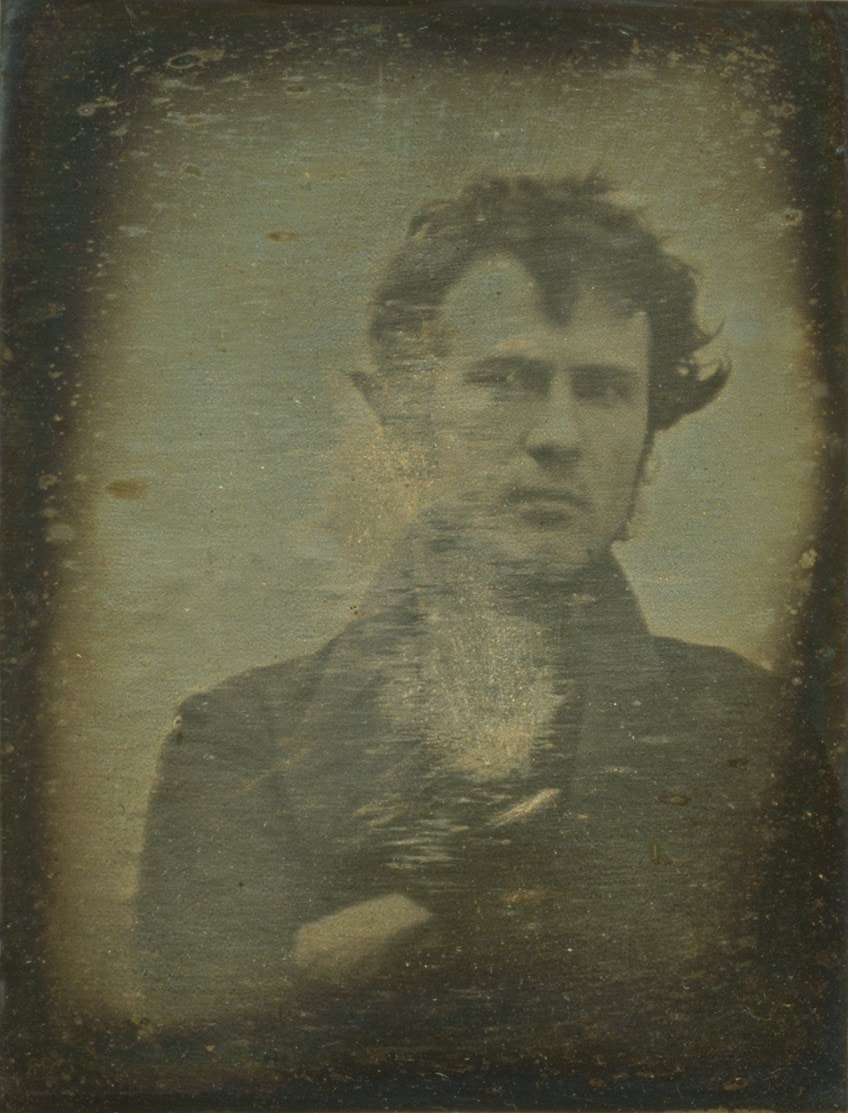
The First Photo of Casual Day-Drinking
Have you ever noticed how most individuals appear grave and serious in antique photographs? Like nobody had ever grinned or pulled a goofy face for the camera. Of course, the procedure was not as straightforward back then as shooting a photo while clutching a drink in one hand. Author David Octavius Hill, painter James Ballantine, and council member Dr. George William Bell are shown conversing over a drink in the 1844 image Edinburgh Ale.
“Edinburgh Ale” is a significant photograph since it captures a very Contemporary scene of casual day-drinking. This is one of the earliest images that captures a moment of leisure and depicts people having a good time and unwinding over a drink.
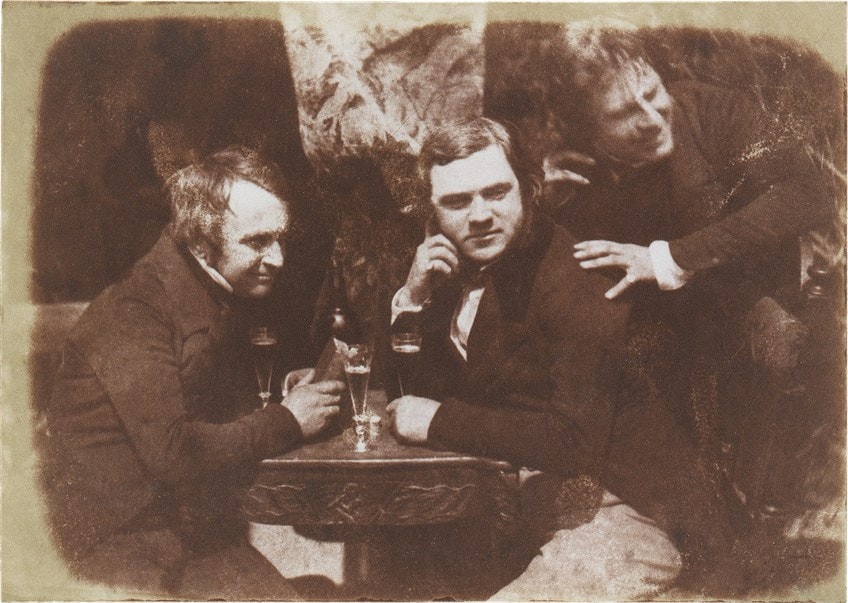
Oldest Photo Hoax
Modern digital technology has made it simple to edit an image and trick the viewer into believing they are seeing something other than what is actually there. Who was the first person to produce a hoax photograph? Presently, there are so many jokes and hoaxes that hardly anybody can be deceived.
The rivalry between the opposing photographers’ forerunners were already well underway when Hippolyte Bayard made the decision to step it up.
Louis Daguerre, his opponent, persuaded him to hold off on telling the French Academy of Sciences about his novel concepts, to which Bayard responded very dramatically. Hippolyte Bayard posed for a self-portrait depicting his false suicide in which he claimed Daguerre and the Academy were to blame for his untimely demise. Instead of being remembered as one of the early camera inventors, he is most known for inventing the first photographic hoax in 1840.
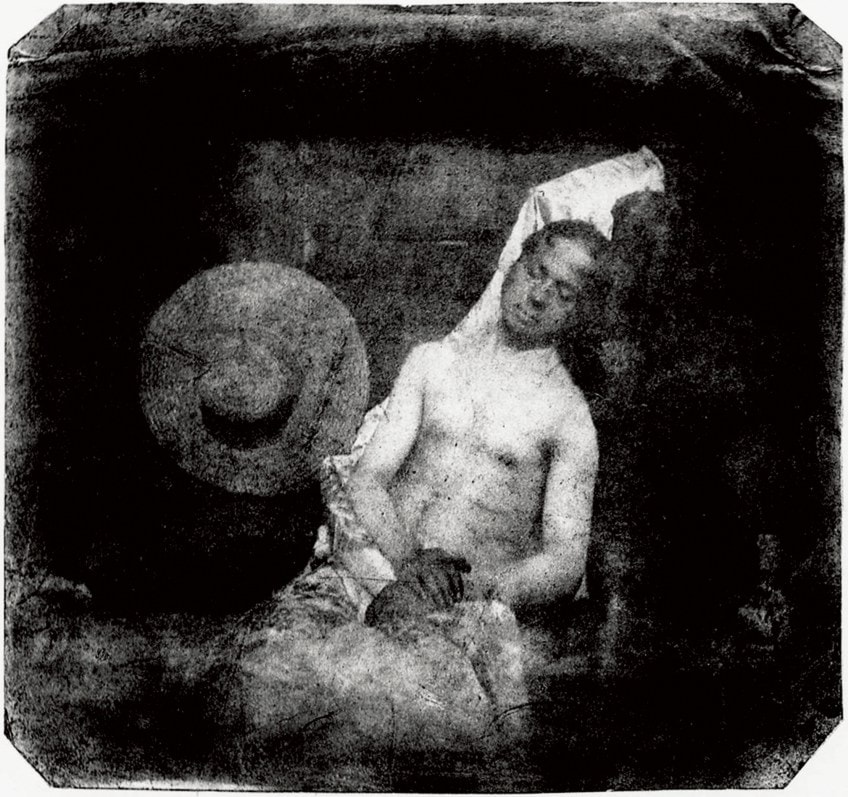
The First Photograph of the Moon: Moon (1840)
| Date | 1840 |
| Medium | Daguerreotype |
| Dimensions (cm) | 8.3 × 7 × 0.5 |
| Where It Is Housed | The Metropolitan Museum of Art, New York City, United States |
While nowadays we have NASA and satellite imaging technology, in the 19th century, the public had John William Draper. Draper was the first physician to capture a detailed and successful image of the moon in 1840, titled Moon. The image was created using the daguerreotype process, which he recorded on 16 March in his diary that he “exposed a prepared plate to the moonbeams, which was conveyed by a double convex lens”. The famous image of the moon shows a crescent shaped halo and is currently on loan to the Metropolitan Museum of Art in New York.
It was previously believed that Louis Daguerre was the first person to capture the moon on a daguerreotype in 1839, however, his laboratory had already burnt down, leaving most of his work destroyed.
In terms of large-scale aerial photographs, the first photograph of Earth was shot in 1972, titled Blue Marble, and was taken by Harrison H. Schmitt, who was a member of NASA’s Apollo 17 group. The image was shot on 7 December when the crew was returning from their first mission to the moon. The first image of Earth shot by a lunar orbiter from the moon was in 1966.
The First Photograph of the Sun
In 1845, the first photograph of the sun was shot by two French physicists Louis Fizeau and Léon Foucault, who applied the daguerreotype method to capture the sun with small details such as sun spots, which was spectacular for its time. A few years later, the unpublished daguerreotype photographer Berkowski, documented the first solar eclipse at the Royal Observatory in 1851.
The First Aerial Photograph on Earth
In 1860, experimental photographer James Wallace Black shot the first aerial photo known as Boston, as the Eagle and the Wild Goose See It from a hot air balloon. The image showcases the emerging city of Boston from approximately 2,000 feet high and was previously contested with an image shot by French photographer Felix Tournachon in 1858.
The First Photo of a Tornado in Kansas
The earliest photo of a natural disaster was captured in Kansas in 1884. The image was shot by A.A. Adams on 26 April. The tornado glided across the Anderson county at a slow pace, which enabled Adams to set up his camera. The tornado remained in Adams’ vicinity for around 30 minuted, which allowed him sufficient time to create the shot. Other important firsts in photography include the first presidential portrait of John Quincy Adams, who was the sixth United States’ President photographed in 1843.
The world’s earliest surviving photograph was produced by Joseph Nicéphore Niépce, whose unique and groundbreaking process of heliography played a crucial role in the advancement of Contemporary photography. By understanding the origins of photography and the many early milestones, you can gain a deeper understanding of the moments that revolutionized the world.
Take a look at our first photo ever taken webstory here!
Frequently Asked Questions
When Was the First Photo Taken in the World?
The first photo in the world was taken around 1827 by Joseph Nicéphore Niépce, who used bitumen of Judea to develop his image on a heated pewter plate. In a camera obscura, the plates were positioned toward his second-story window. Niépce left the camera running for a minimum of eight hours and a maximum of two days. When the unhardened portions of asphalt were eliminated and the bitumen solidified, an image of the cityscape formed.
What Was Depicted in the First Permanent Photograph Taken?
In the first permanent image taken by Joseph Nicéphore Niépce, one can spot the left building’s upper windows and the basic shape of a building on the right. The colorized version allows us to see the neighboring buildings’ roofs and a field in the distance.
What Was the First Color Photograph in the World?
James Clerk Maxwell created the first color photograph in 1861. The image depicted a tartan ribbon, which was photographed three times using filters of yellow, red, and blue, resulting in a form of additive color photography. Thomas Sutton is also credited alongside Maxwell for SLR since he pressed the shutter in 1861 to help produce the image.
Jordan Anthony is a film photographer, curator, and arts writer based in Cape Town, South Africa. Anthony schooled in Durban and graduated from the University of the Witwatersrand, Johannesburg, with a Bachelor of Art in Fine Arts. During her studies, she explored additional electives in archaeology and psychology, while focusing on themes such as healing, identity, dreams, and intuitive creation in her Contemporary art practice. She has since worked and collaborated with various professionals in the local art industry, including the KZNSA Gallery in Durban (with Strauss & Co.), Turbine Art Fair (via overheard in the gallery), and the Wits Art Museum.
Anthony’s interests include subjects and themes related to philosophy, memory, and esotericism. Her personal photography archive traces her exploration of film through abstract manipulations of color, portraiture, candid photography, and urban landscapes. Her favorite art movements include Surrealism and Fluxus, as well as art produced by ancient civilizations. Anthony’s earliest encounters with art began in childhood with a book on Salvador Dalí and imagery from old recipe books, medical books, and religious literature. She also enjoys the allure of found objects, brown noise, and constellations.
Learn more about Jordan Anthony and the Art in Context Team.
Cite this Article
Jordan, Anthony, “First Picture Ever Taken – The Dawn of Photography.” Art in Context. July 12, 2022. URL: https://artincontext.org/first-picture-ever-taken/
Anthony, J. (2022, 12 July). First Picture Ever Taken – The Dawn of Photography. Art in Context. https://artincontext.org/first-picture-ever-taken/
Anthony, Jordan. “First Picture Ever Taken – The Dawn of Photography.” Art in Context, July 12, 2022. https://artincontext.org/first-picture-ever-taken/.


